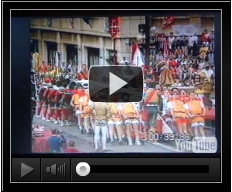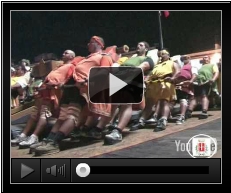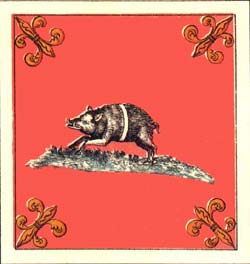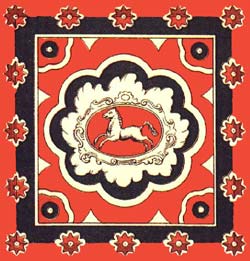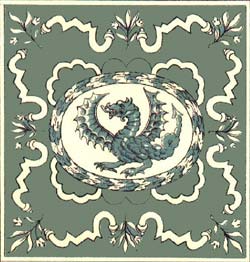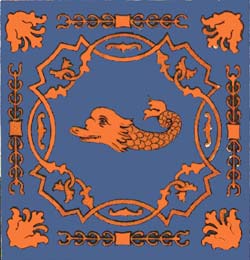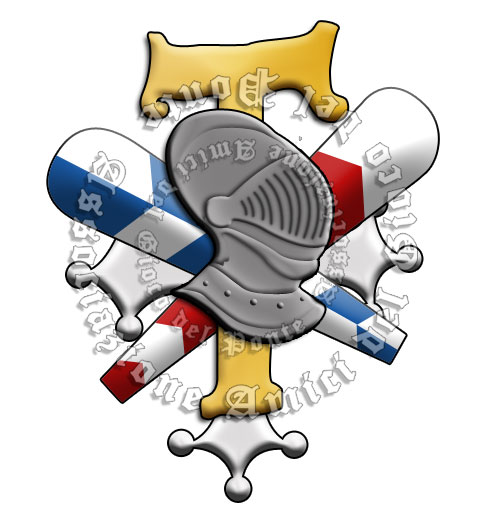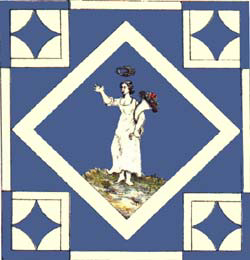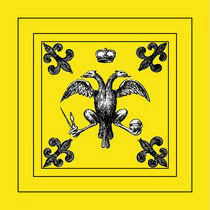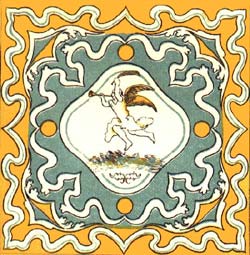The Battle on the Bridge
The Battle on the Bridge comes alive with two armies dressed in elaborate and shimmering sixteenth century Spanish costumes. It is divided into five phases: the march of the troops along the Lungarni until their arrival in their respective bases, the formal opening of the battle by the Anziano Rettore, the "call to arms" by the troops, the challenges made by ambassadors on horseback, and finally, the battle itself, as the various magistrature compete under the strategic command of their respective leaders.
Next battle on the bridge wil be saturday 25th June. Info and tickets
Next battle on the bridge wil be saturday 25th June. Info and tickets

History
The origins of the Battle on the Bridge are unclear, although it almost certainly originated from the so-called "mazzascudo" when Pisans trained in intense battles in Piazza degli Anziani (known as Piazza dei Cavalieri). Mazzascudo was a military simulation divided into two parts in which single players dressed in armor and armed with clubs and shields ("mazze" and "scudo" from which the name of game derives) would compete against one another all day and then later again in a wider battle with combatants divided into two groups, called "Gallo" and "Gazza".
Centuries later, certainly around 16th century and again around 18th century, a game was again proposed in another area of the city that, in its evolving state, only partially resembled the dynamics and spirit of mazzascudo. Yesterday and today, the scope of the game is to conquer the bridge occupied by the enemy.
It is a game that has changed a great deal over time, mixing elements and traces of past ages, beginning in the sixteenth century under the Medici and later with the Lorraine Grand Dukes in the second half of the eighteenth century, when the costumes worn on the last Saturday in June were tailored.
Over the twentieth century, in the 1930s, 1950s, and 1960s, the Battle on the Bridge was held intermittently. Since 1982 the battle between the Tramontana and the Mezzogiorno has been held without interruption. The game consists of a large iron cart weighing several tons pushed on rails by two groups of twenty powerful combatants guided by captains who defend the colors of their own neighborhood team with their own particular colors, symbol, and slogan. The historical neighborhoods for the Mezzogiorno are: S.Antonio, S.Martino, S.Marco, Delfini, Leoni, Dragoni while those for the Tramontana are: S.Maria, S.Francesco, S.Michele, Mattaccini, Satiri, Calci.
Centuries later, certainly around 16th century and again around 18th century, a game was again proposed in another area of the city that, in its evolving state, only partially resembled the dynamics and spirit of mazzascudo. Yesterday and today, the scope of the game is to conquer the bridge occupied by the enemy.
It is a game that has changed a great deal over time, mixing elements and traces of past ages, beginning in the sixteenth century under the Medici and later with the Lorraine Grand Dukes in the second half of the eighteenth century, when the costumes worn on the last Saturday in June were tailored.
Over the twentieth century, in the 1930s, 1950s, and 1960s, the Battle on the Bridge was held intermittently. Since 1982 the battle between the Tramontana and the Mezzogiorno has been held without interruption. The game consists of a large iron cart weighing several tons pushed on rails by two groups of twenty powerful combatants guided by captains who defend the colors of their own neighborhood team with their own particular colors, symbol, and slogan. The historical neighborhoods for the Mezzogiorno are: S.Antonio, S.Martino, S.Marco, Delfini, Leoni, Dragoni while those for the Tramontana are: S.Maria, S.Francesco, S.Michele, Mattaccini, Satiri, Calci.
Videos
Today
The Battle on the Bridge comes alive through the participants who play specific roles (such as Field Master, Sergeant Major, Celatino - a kind of special soldier), guardian, standard bearer, drummer, trumpeter, and many others). The game is based on a military hierarchy beginning with the Council of Elders (dressed in red robes, watching the procession from the terrace of the City Hall) which is the administrative, ruling, and organizing committee. The Council is composed of the Mayor of Pisa (the so-called Anziano rettore), the Chancellor, and the Commandant of the Battle on the Bridge, in addition to other experienced councilors, generals, and lieutenant generals, the highest rank that each side nominates to the Council, as well as two additional Councillors, one civil (with a "political" role) and one military (in support of the Military Lieutenant), and Judges from each neighborhood.
In the marshalling of the teams in addition to the Mezzogiorno and the Tramontana, there are the Judges, that is the field officials who apply the rules of battle. Other important figures are the Lieutenant Standard Bearers of the competition, the Partisan Observers, the Clock officials, and even the Pages, Pikemen, Halberdsmen, and the reserve judges. The latter are armed with particular lances called "pikes" and "halberds".
The game is also a social phenomenon considering the many volunteers involved each year in the organization of this and other events related to the game as well as the recruitment of participants.
To this end, the "Associazione Amici del Gioco del Ponte" (www.amicidelgiocodelponte.it) was formed in 1970. It is the oldest civic association tied to the event, and remains active all year promoting the Battle on the Bridge among afficionados, residents, and tourists alike. In the early 1980s the association played an important role in the restoring the game and today remains actively involved in organizing the most important event of the year for Pisans.
In the marshalling of the teams in addition to the Mezzogiorno and the Tramontana, there are the Judges, that is the field officials who apply the rules of battle. Other important figures are the Lieutenant Standard Bearers of the competition, the Partisan Observers, the Clock officials, and even the Pages, Pikemen, Halberdsmen, and the reserve judges. The latter are armed with particular lances called "pikes" and "halberds".
The game is also a social phenomenon considering the many volunteers involved each year in the organization of this and other events related to the game as well as the recruitment of participants.
To this end, the "Associazione Amici del Gioco del Ponte" (www.amicidelgiocodelponte.it) was formed in 1970. It is the oldest civic association tied to the event, and remains active all year promoting the Battle on the Bridge among afficionados, residents, and tourists alike. In the early 1980s the association played an important role in the restoring the game and today remains actively involved in organizing the most important event of the year for Pisans.
To have more information about the Association click here


